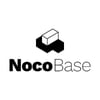As the first day of Maintainer Month, it's a good time to reflect on the role of the maintainer in the open source ecosystem. Despite the necessary role they play, their efforts can be underappreciated and the experience can be overwhelming. As Ashwin Ramaswami from the Linux Foundation Blog puts it, "There is no fixed definition for maintainers, but broadly, the term refers to those contributors who lead an open source project."
The Unseen Labor of Open Source Maintainers
A definition I like better is from Steven J. Vaughan-Nichols, where maintainers are compared to "the conductors of an open source project orchestra." They’re often responsible for writing code, managing documentation, triaging bug reports, creating awareness, communicating to diverse groups of people, and supporting and encouraging community engagement. You can imagine, then, that the day-to-day tasks can feel overwhelming, as Nolan Lawson's 2017 reflection describes: “Outside your door stands a line of a few hundred people... You want to help all of them, but for now, you’re putting it off. Maybe you had a hard day at work, or you’re tired, or you’re just trying to enjoy a weekend with your family and friends.”
The Sustainability Crisis
The traditional model of open source maintainership — which often relies on volunteering and inconsistent or total lack of funding — is increasingly proving unsustainable. This lack of support puts both the future of the maintainers and the projects at risk for abandonment. A 2021 survey by Tidelift showed that a significant portion of maintainers feel undervalued, which we know can lead to burnout and even mental health issues.
One of the biggest challenges maintainers face is the balance of making progress towards the vision and purpose of the project and the ever-changing needs of the users. This balance - and the challenges of scaling a project - requires careful consideration, prioritization, and focus, otherwise your team will find themselves on a series of side quests but never moving forward on the main path.
Beyond issues and bug reports, maintainers also have the responsibility of cultivating and managing their project's community. This often means mediating conflicts, establishing coding standards, and creating a welcoming environment for community members. This portion of the job requires an altogether different skillset, utilizing strong core skills, requiring emotional intelligence, diplomacy, and a desire to create a healthy, productive ecosystem. This all plays into the cognitive load the maintainers bear.
Reducing the Cognitive Load of Maintainers
Cognitive Load: the amount of mental effort used in your working memory.
A high cognitive load not only impacts the maintainer’s efficiency and creativity but can also contribute to burnout. If we can reduce the burden for maintainers, we’ll be creating a healthier and more sustainable open source ecosystem. In addition to being an empathetic contributor, here are some strategies to alleviate the cognitive demands open source maintainers face:
Streamlining Communication and Workflows
One of the top asks I’ve heard from maintainers is finding a way to more easily triage issues, closing duplicates, removing stale issues and angry rants, and making the process of sorting issues less complicated. There are already features and actions that can help make this happen, but we have a long way to go to empower maintainers to focus on the most critical tasks first. In addition to this, identifying low-quality submissions and removing unnecessary communications can help decrease the amount of attention maintainers need to shift to respond to pull requests and issues.
Leveraging Community Support
One of the most effective ways to reduce a maintainer's cognitive load is to delegate responsibilities to trusted community members. This is easier said than done, however. Because these roles are often volunteer, volunteers often “disappear” or stop communicating and maintainers must ensure the quality of work is sufficient and that volunteers have adequate support. It takes work to create roles for community moderators, issue triagers, and peer reviewers in order to distribute the workload more evenly. The first step is to become a dedicated community member who shows up, answers questions, engages with the community, and demonstrates that maintainers can depend on you. If there isn’t already, a volunteer can offer to create defined roles and responsibilities as well as create detailed documentation on what each role entails and what is expected to reduce volunteer turnover. Another option would be to create a structured onboarding process that includes important information about the project and connects volunteers to mentors or people who have a deeper understanding of the project.
Encouraging Asynchronous Work
Maintainers often feel pressure to respond immediately to community requests, which can be stressful and divert their attention. Encouraging an asynchronous work environment with boundaries can help decrease the pressure maintainers often feel when a new notification comes in. This involves setting expectations within the community that not all communications will receive an immediate response.
Focusing on Documentation
Well-maintained documentation can significantly reduce the cognitive load for maintainers by answering common questions and providing clear instructions for contributors. As part of this, when contributors run into issues with a project, they should create an issue to update the documentation.
Providing Training and Resources
Finally, providing maintainers with access to training and resources on best practices for project management, stress management, and effective delegation can help give them the skills they need to manage their cognitive load. Workshops and mentorship programs can also be helpful maintainers as well as finding ways to connect maintainers as part of a community, reducing the feeling of isolation that often accompanies maintainer roles.
Celebrating and Supporting Maintainers
Let's show our appreciation for open source maintainers throughout the year, not just in May. Here's how you can get involved:
- Financial Support: Explore funding options for critical projects.
- Contribute Code or Content: Help advance the project with your skills.
- Reduce Cognitive Load: Help triage issues, write documentation, or answer community questions.
- Send a Note of Recognition: Thank a maintainer for their hard work at oss.love
The goal for all of us should be to create a future where maintainership isn’t just sustainable, it’s fulfilling and rewarding.







Top comments (1)
Love, love! Thank you for kicking off maintainer month in such a thoughtful way, @bekahhw and @saucedopen ❤️✌️
Tom And Jerry Jerry Mouse GIF - Tom And Jerry Jerry Mouse Clap - Discover & Share GIFs
Click to view the GIF
Some comments may only be visible to logged-in visitors. Sign in to view all comments.